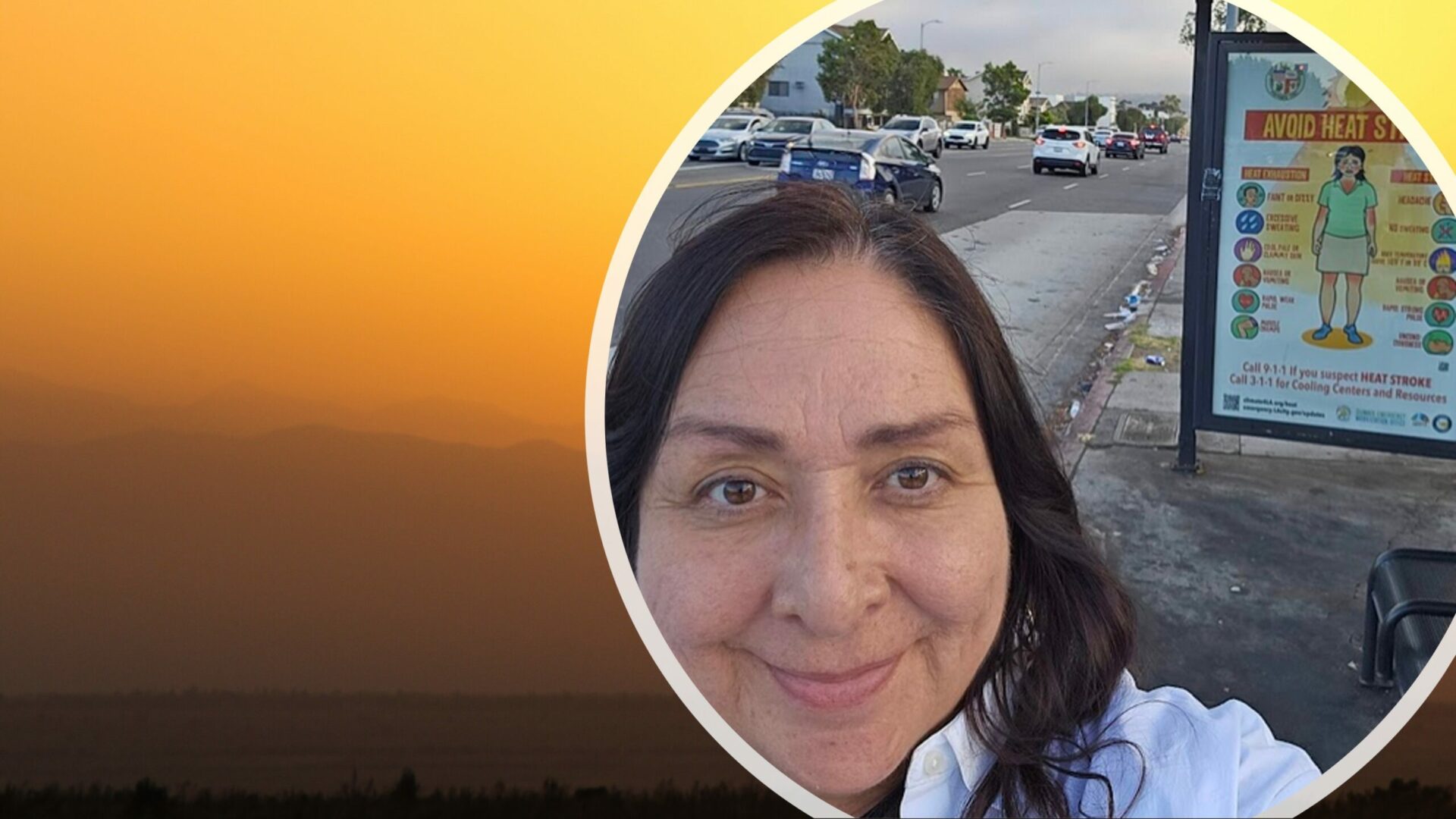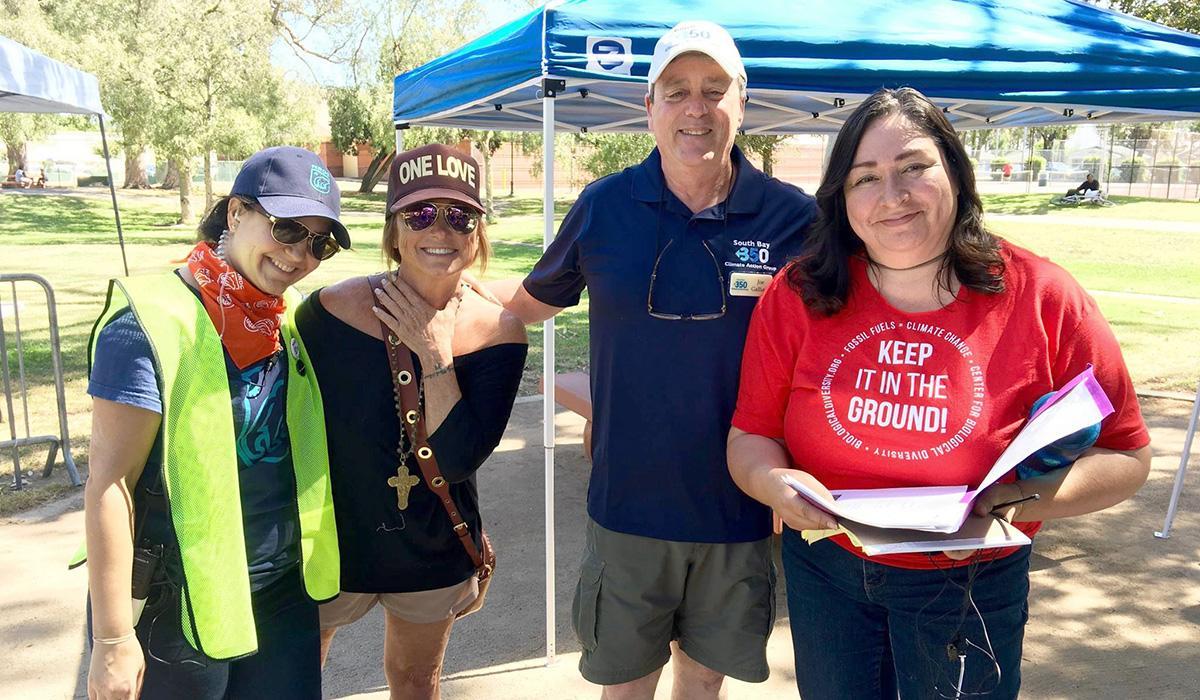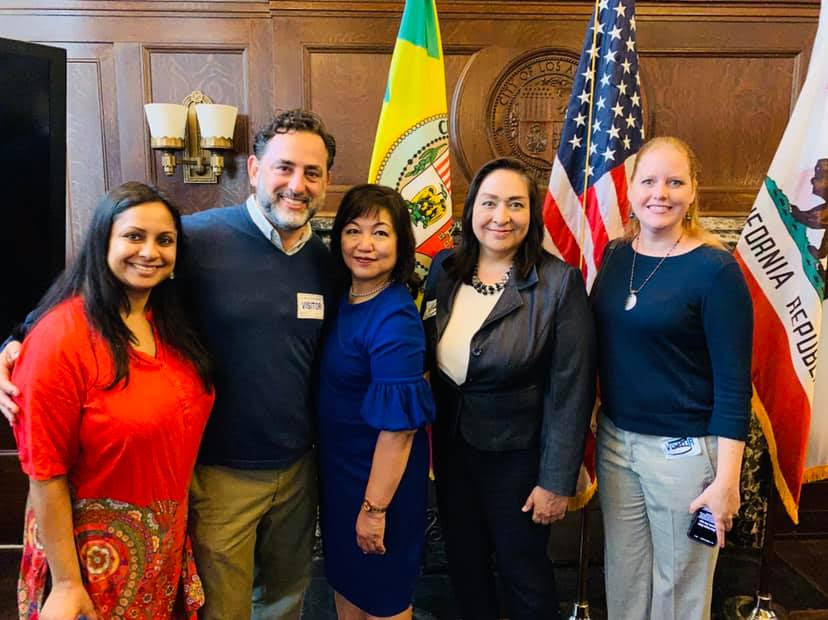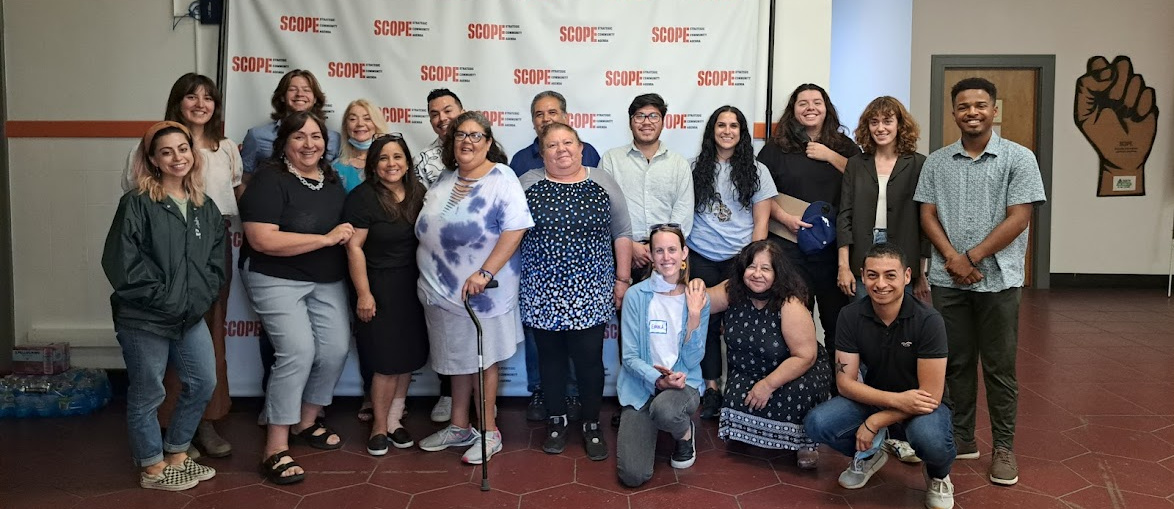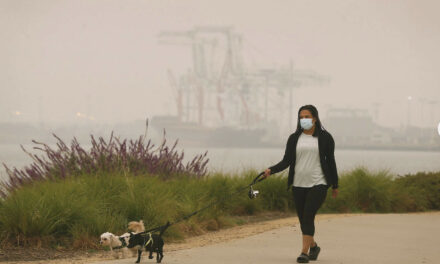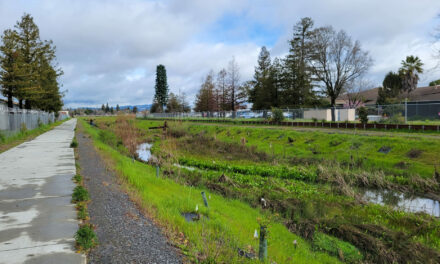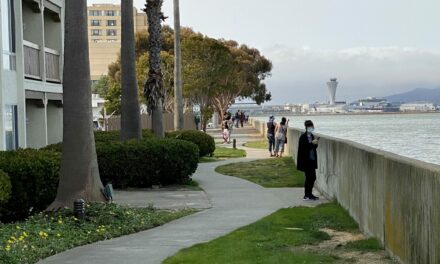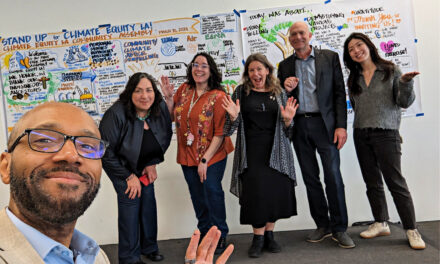LA Heat Officer Shares Lessons for Northern Neighbors
Segura at bus shelter on Crenshaw Boulevard with graphics from her heat relief campaign. Photo: Marta Segura.
It’s been a hot summer. But California in general has largely been spared. In fact, downtown Los Angeles set records– for being cooler than ever-before recorded in May and June.
So Marta Segura got a bit of a breather – and examples to learn from — as she started her second year as the City of Los Angeles’ Chief Heat Officer. Segura added the title in June 2022 (she was already director of LA’s Climate Emergency Mobilization Office). In doing so, she became the first CHO in the state; the third in the nation, alongside Phoenix and Miami-Dade County; and one of about a dozen worldwide.
Earlier this month, Segura sat down to talk over Zoom with KneeDeep Times about heat: how Los Angeles is addressing it under her watch; why she believes even cities as cool as San Francisco should have someone in charge of addressing extreme weather; and how she manages to stay optimistic when the science says her main challenge, the heat, will only continue to get worse. The interview has been edited for length and clarity.
Q: California has had a mild summer, but the heat has been brutal in a lot of the country. What have you learned watching other places struggle with weather and disasters over the last few months?
Well, we did have a historic heatwave here in September last year. All these breaking records are showing all of us that this is very unpredictable and strange weather and we do have to be ready for anything.
We’re always looking at other places, to see what we can learn from them. For instance, the experts in Hawaii [have been] very frank with us about what they could have done better. They could have had earlier notification systems. They could have had increased escape routes to make sure people got out when they needed it. And they have very vulnerable power grids there. We’ve experienced that here in California, too, when we had those wildfires close to Napa and in Northern California, that were created by power lines sending sparks onto vegetation and trees. So we’ve been learning from all of these mistakes, and we want to make sure that we don’t have those vulnerabilities here. And that just means getting better with early warning systems, getting better with our communications, ensuring that we’re reaching the most vulnerable communities.
Q: What are some changes you’ve made this past year to the city’s heat infrastructure?
We’re telling everybody [that] all of our libraries, all of our public-facing facilities — our rec centers, our senior centers, everything that the city of LA offers — [are] a place of refuge during extreme weather events. You can walk in there when you are feeling the need to get rest, get water and just recover. And now we also have these augmented cooling centers that are available in heatwaves on weekends, Sundays, holidays, and nighttime. There’s a lot of room for improvement, though. We’re identifying the gaps where we still need more cooling centers, more hydration stations where people can fill up their water bottles, more bus shelters, shade structures, tree canopy — all the elements of open space that we know cool down a city.
Q: What do you wish more people understood about heat?
We need people to understand that heat season is longer. It’s now mid-June to mid-November. And heat waves are also longer in duration. They last well into the evening, even into the next morning.
It’s not your grandmother’s summer anymore. It’s not even the summer that you had when you were growing up. It’s a much more dangerous summer, and you have to prepare. And you have to plan and be proactive, to do things that you didn’t used to do during the summer so that you don’t have exposure to heat injury – and neither does your grandmother, nor your children.
It’s those habits of care. One of them is drinking more water and staying hydrated. The other is ensuring not only that you’re staying in the shade or staying in a cool area, but that you do so at least three to four hours a day during heat season. And if you don’t have to be outside, avoid being outside.
Maybe this sounds like things that you’ve always heard before. But the big difference is that now we have these historic heat waves that are not providing an opportunity for your body to recover.
Segura at City Hall with Commissioner Susana Reyes (center, with Segura at right) of the City of Los Angeles Board of Public Works. Photo: LA Public Works.
Q: The City Council is talking about putting air-conditioning in all Los Angeles rental units. Is that part of the answer to the city’s heat issues?
We’re looking at the possibility of having those kinds of requirements. But I also wanted to caution our council – whose hearts are in the right place — that we need comprehensive changes as well. We need heat pumps, but also solar energy, solar battery backup systems, passive cooling, weatherization. All of these things would reduce the energy burden on the tenant, and also the owner of the property. The main goal is to decarbonize these buildings, reduce the energy burden, while also providing thermal cooling.
Q: Last year you talked about providing pop-up cooling stations for the city’s sizable homeless population. Is that still the plan?
What we’ve heard from advocates is you can’t just put a bunch of mobile cooling stations out there for the unhoused, because they’re so spread out. They might respond better to mobile delivery type triage systems, like a medical service USC has. It’s probably better if we went more towards that kind of a model.
Segura meets with community members on climate justice issues. Photo: LA Public Works.
Q: Cities up and down the state now have climate offices and resiliency directors. How is that different, if at all, than having someone in charge of heat?
For example, I’m working with the planning department to create our new climate action and adaptation plan to ensure that we’re integrating extreme heat as a priority area. You don’t really need a chief heat officer title to do that. But I think what’s different is if you have someone at the city who’s focused on extreme heat or extreme weather then it will be reflected in those plans, because emergency management staff are only really used to dealing with droughts and floods and earthquakes. Everybody’s having extreme weather and wildfires.
Q: Your job wouldn’t exist if there weren’t a crisis that has an apocalyptic feel to it at times. How do you grapple with that tension?
I don’t want to lose hope because then I can’t motivate myself to go on. I believe we have to really think about what was working and why it’s not working now and eliminate the factors that created this intense extreme heat, especially in urban areas.
My biggest fear is that we’re going to have an unlivable Los Angeles, where nobody walks the streets; everybody stays home. And that’s an unequal advantage for those of us who can afford air conditioning. Because those who cannot afford air conditioning are not only not going to be able to live here, but are going to slowly perish because they don’t have access to air conditioning, and then we won’t have an economy. And then we won’t have the LA that anybody ever knew.
And that’s what every city should think about. If I don’t address this extreme weather issue in a comprehensive, strategic way, with the coordination and collaboration that is needed, what is this city going to look like in a few years?






